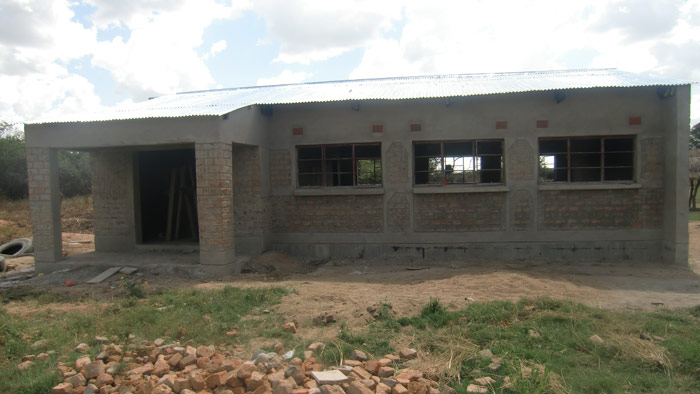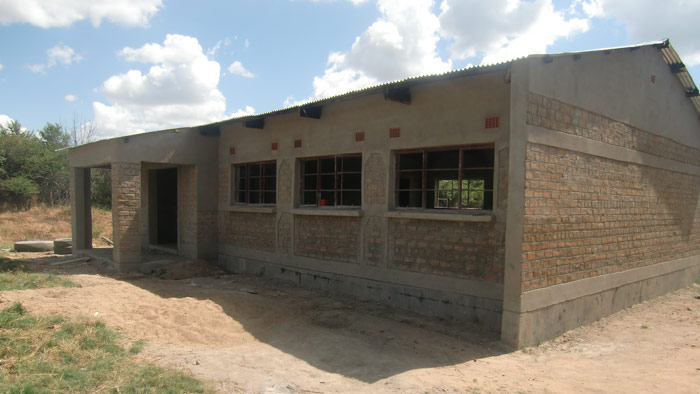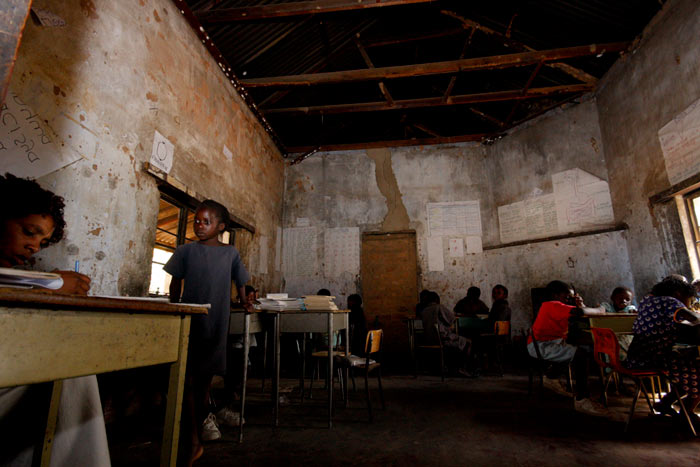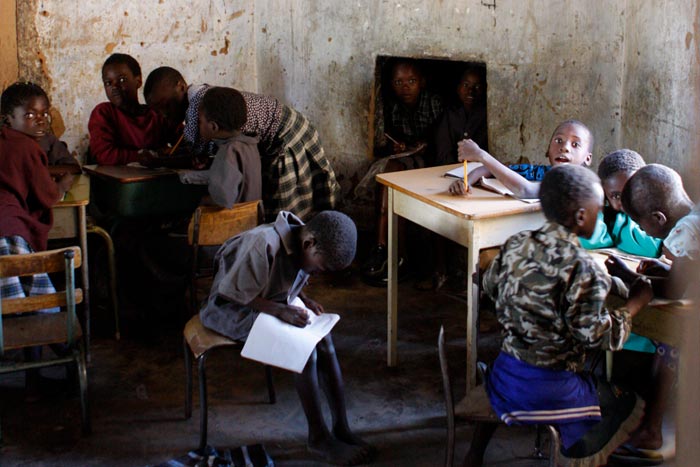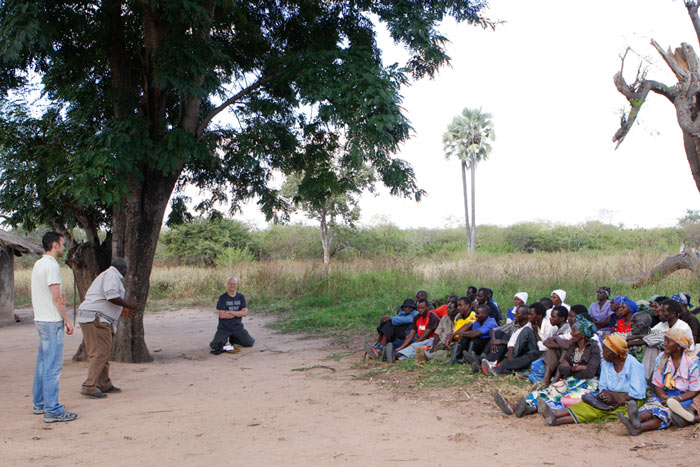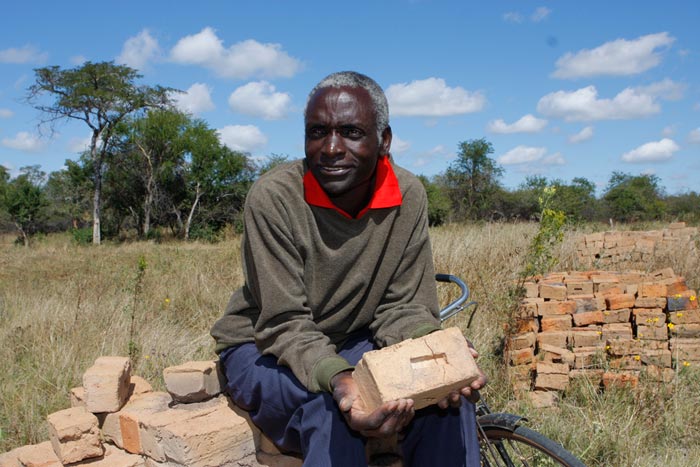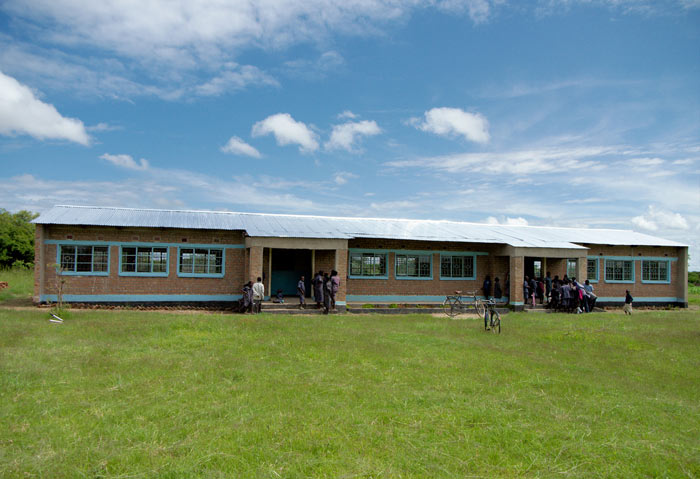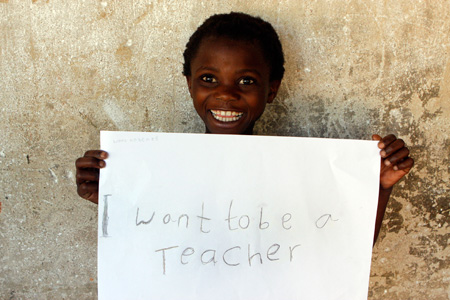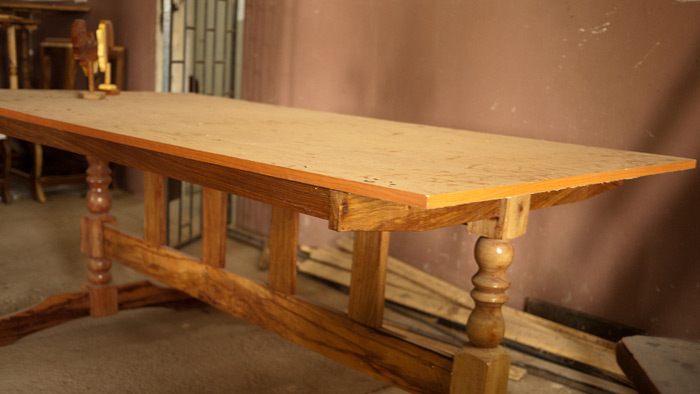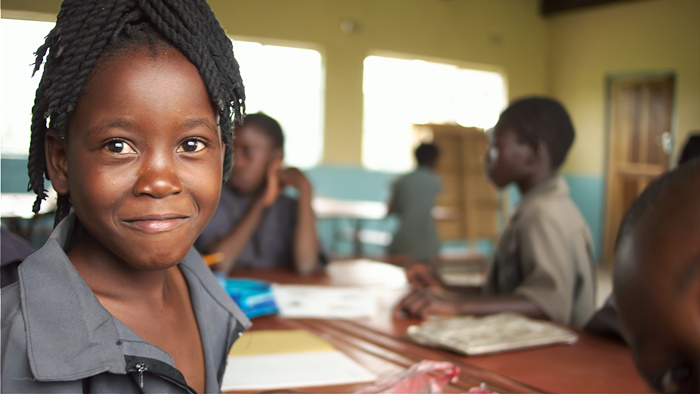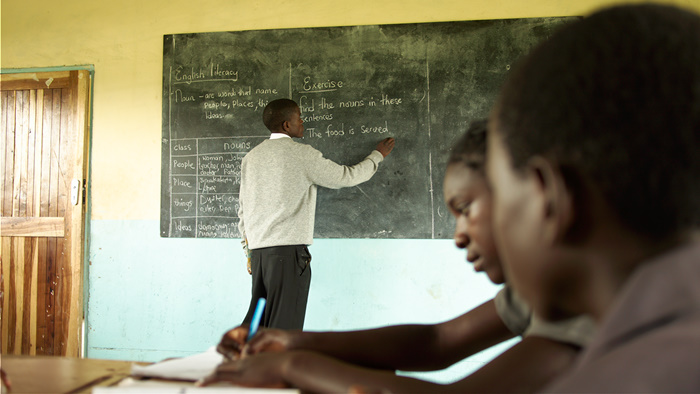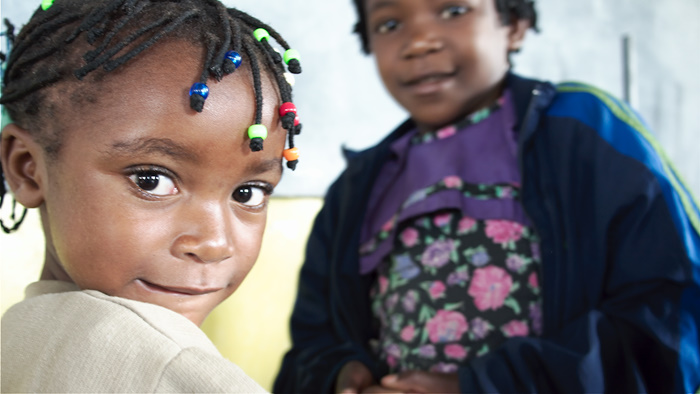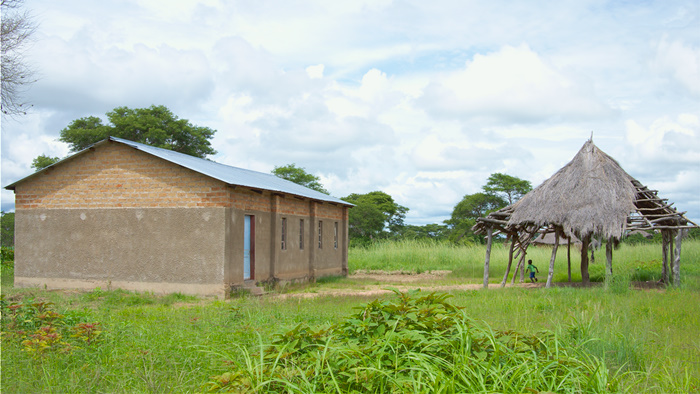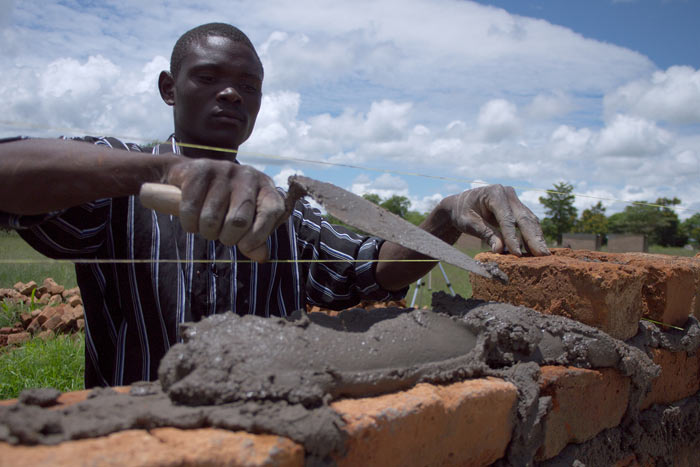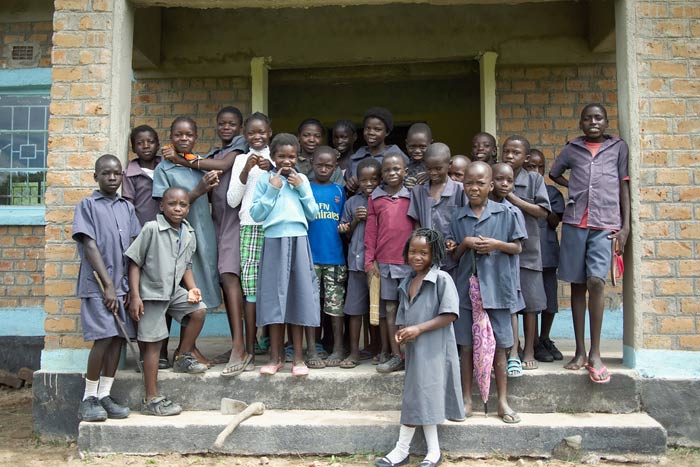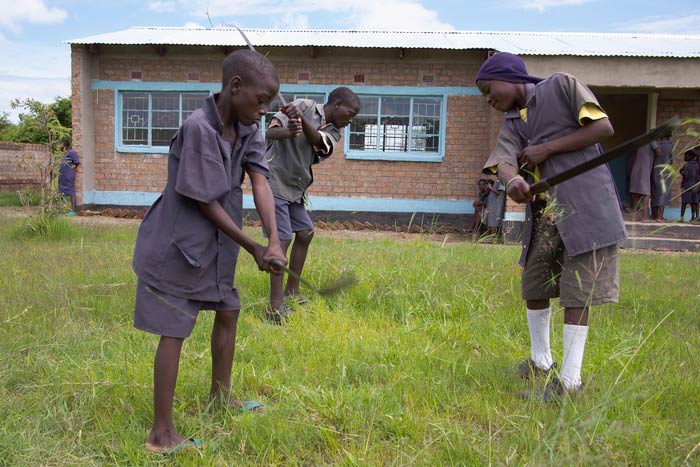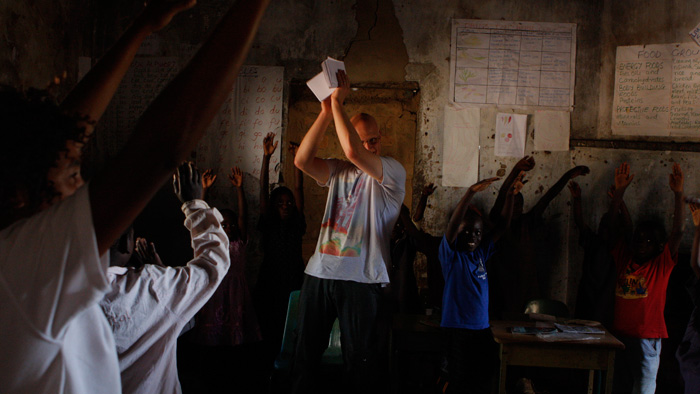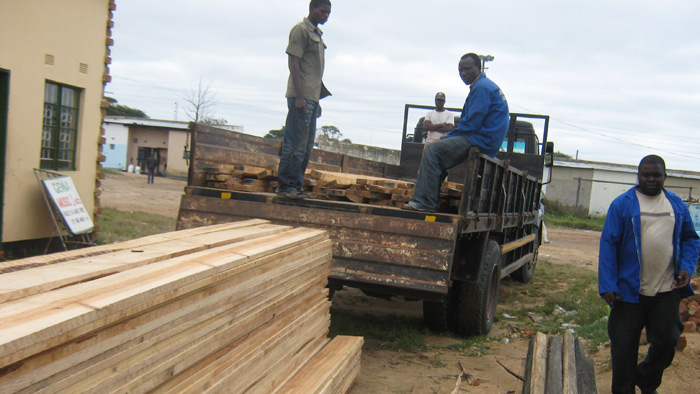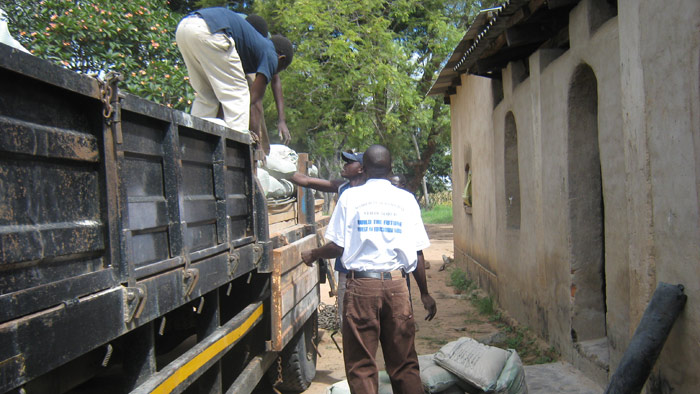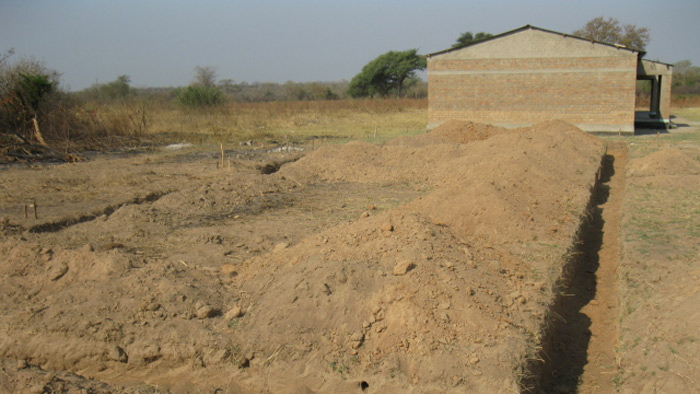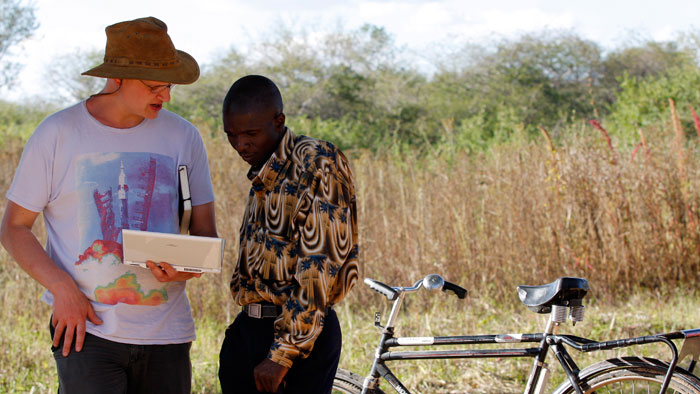
George, in one of his snazzy shirts. Pictured here with Volunteer Adam.
A few weeks ago we asked you if there were any questions you wanted us to put to George Matantilo, headmaster of Simakakata Community School in Southern Zambia.
You replied with loads of questions about life at the school, how the pupils are doing and the state of haute couture in Simakakata. They were all great, so when we spoke to George last week, we put some of the best questions to him.
What’s your favourite subject to teach?
English, definitely. It’s one of the only classes I have time to teach now.
Which subject is most useful to your students?
In Zambia the [primary school] curriculum is divided into six subjects. Students are examined in English, Mathematics, Science, Developmental Studies, Technology and Tonga. The most important ones are definitely English and Maths.
What do you like to do as a hobby?
I like watching sports, especially football. And spending time with my family.
How has the school impacted the community at Simakakata?
The school has changed Simakakata in so many ways. Let me give you an example: very recently we had a gathering here and gathering in the village which was attended by many people, including the big chief. This was very rare in the olden days. People are learning to work together to decide what they want, and organise how to achieve it.
This started with the small group of people who began the school, but they’ve seen the success and now do much more. They’ve started to come up with self-help clubs, like co-operatives to receive training and assistance from the government to help grow maize. Some of the dairy farmers meet almost daily to work out who has spare storage for milk at their homes.
The people here have learned a lot of things about co-operation. But they’ve also learned the importance of sending their children to school. In a few years, I am sure that all the children in the area will be educated.
What do the children have for lunch at school?
Thanks to the new buildings and the progress we have made here, we are now part of the Ministry of Education food program. So we are given nshima to feed the children at lunchtime. Most families here are very poor, and often cannot feed the children at home. So they are eager to come to school and we get much better attendance the whole year round.
How will teaching change in the next five years?
I don’t think that there will be many changes to the way we teach, but I hope that by 2013 we can take children here up until grade 9. The curriculum will remain stable, though, but there are plans to change the way teachers are trained.
Are all the students enthusiastic?
Yes, two things are motivating them. The first is the food program, but the second is the new classrooms. They are really keen to come to school now.
Where did you get that shirt? I really like the pattern!
(Laughs) I buy my shirts from a small boutique shop in Kalomo. They are very cheap, as I don’t have much to spend!
If you’d like to ask George a question next time we speak to him, please leave it as a comment below.
